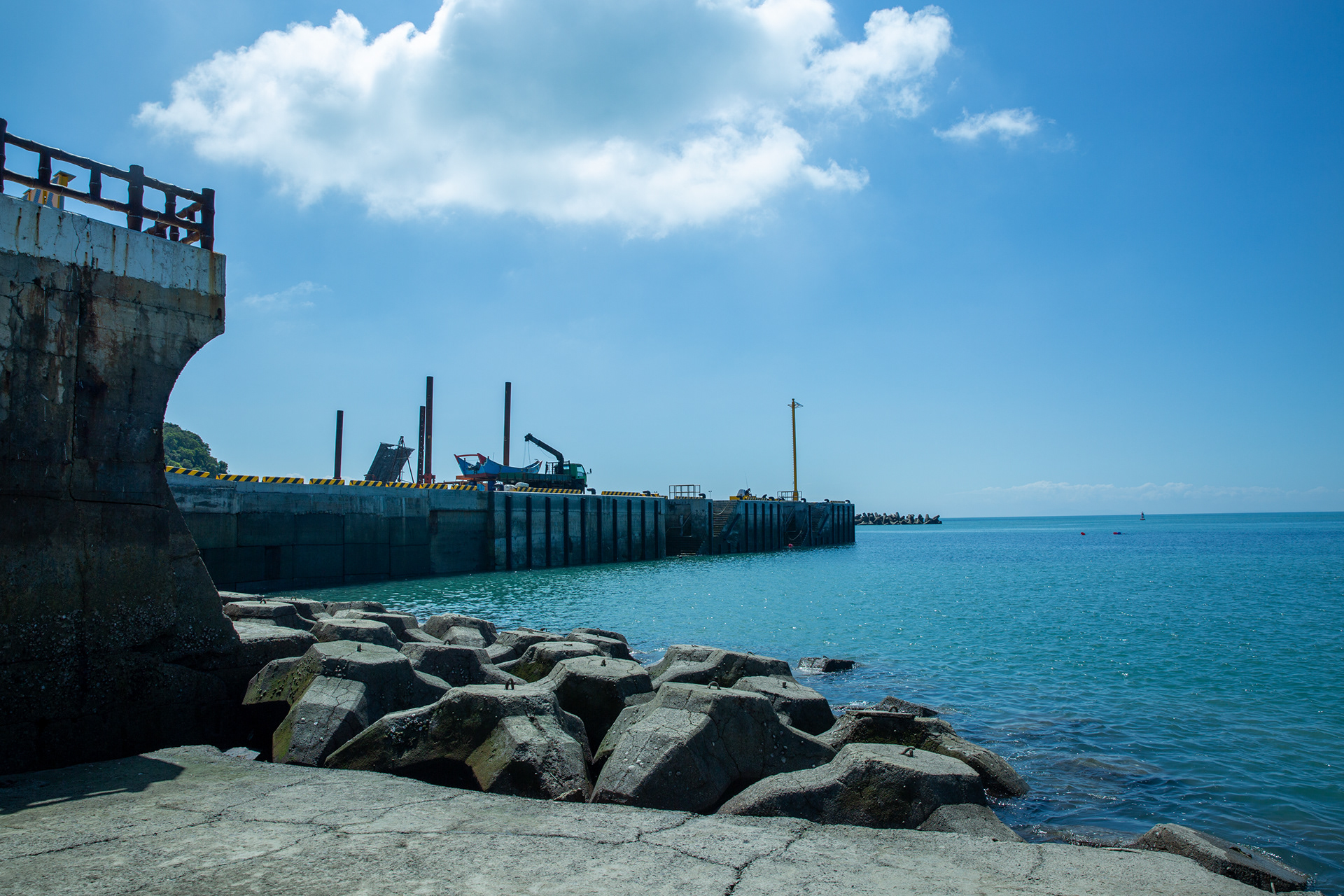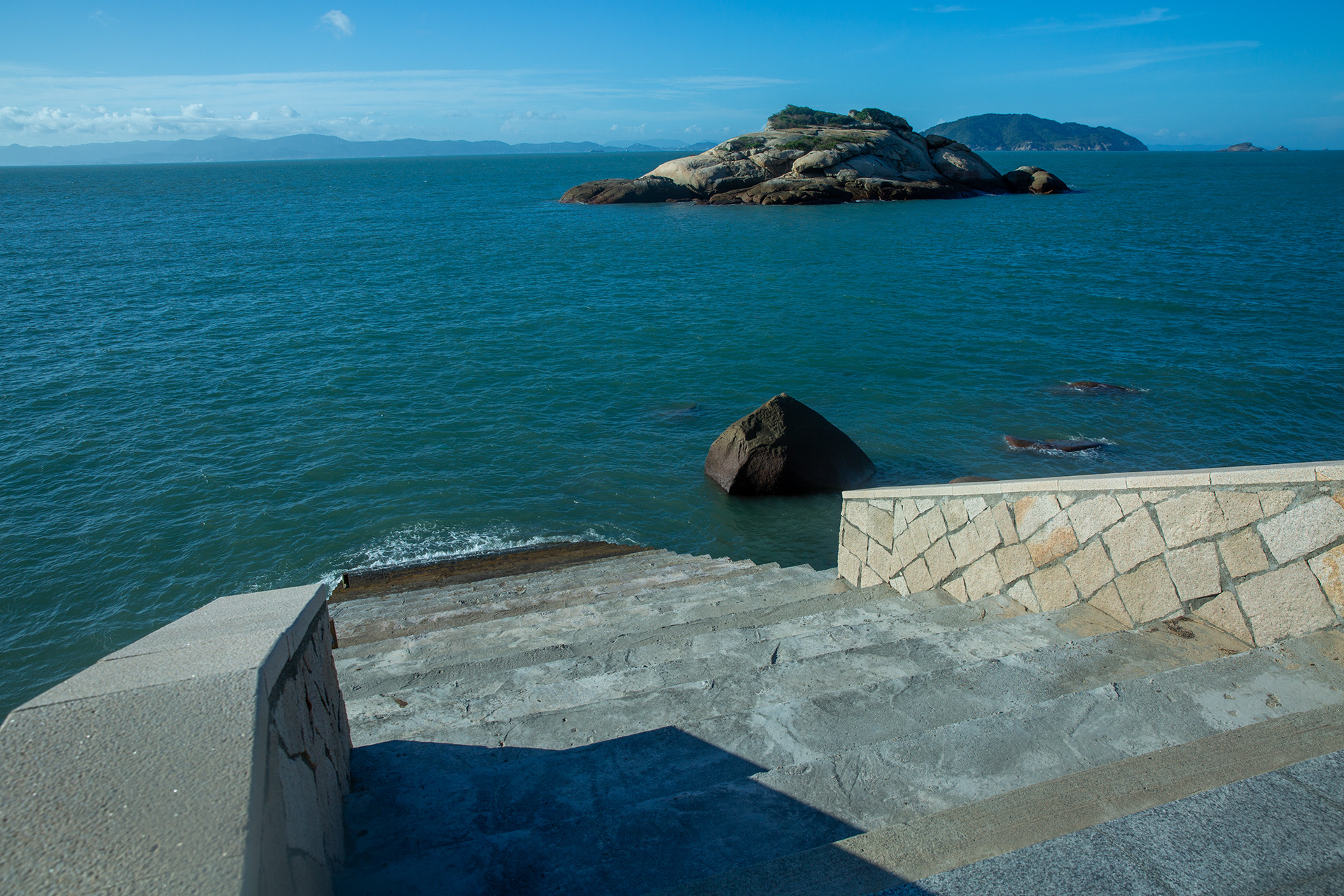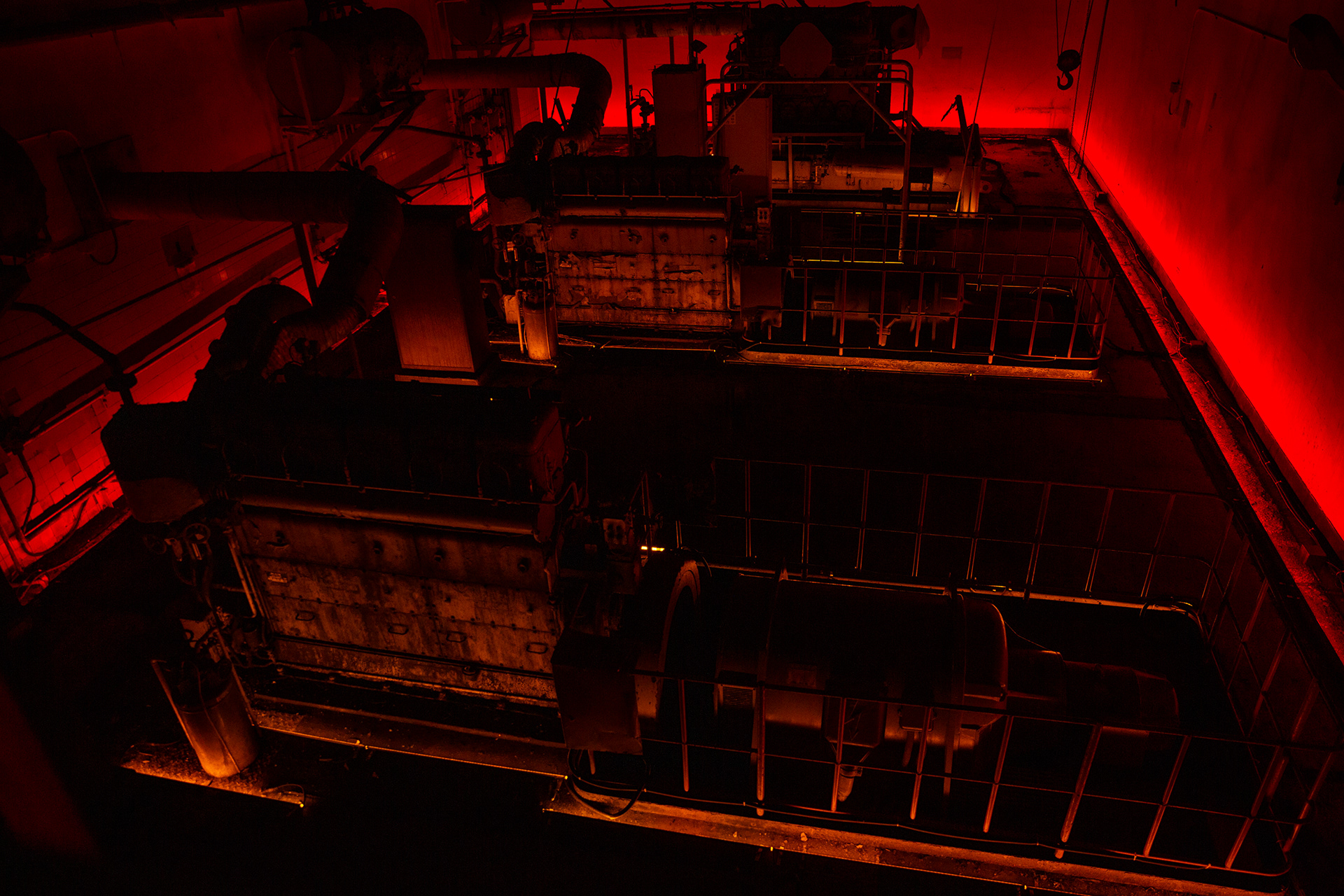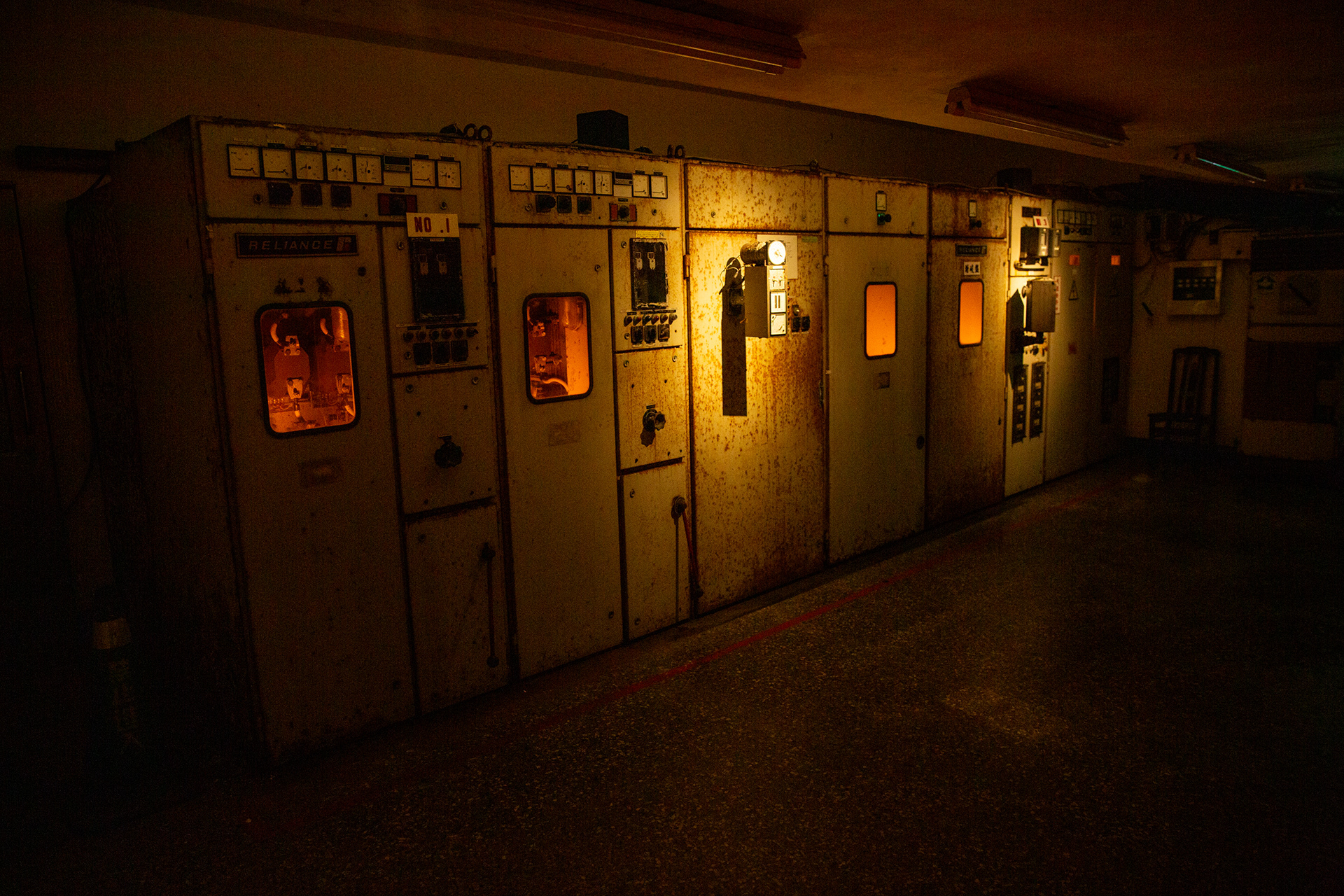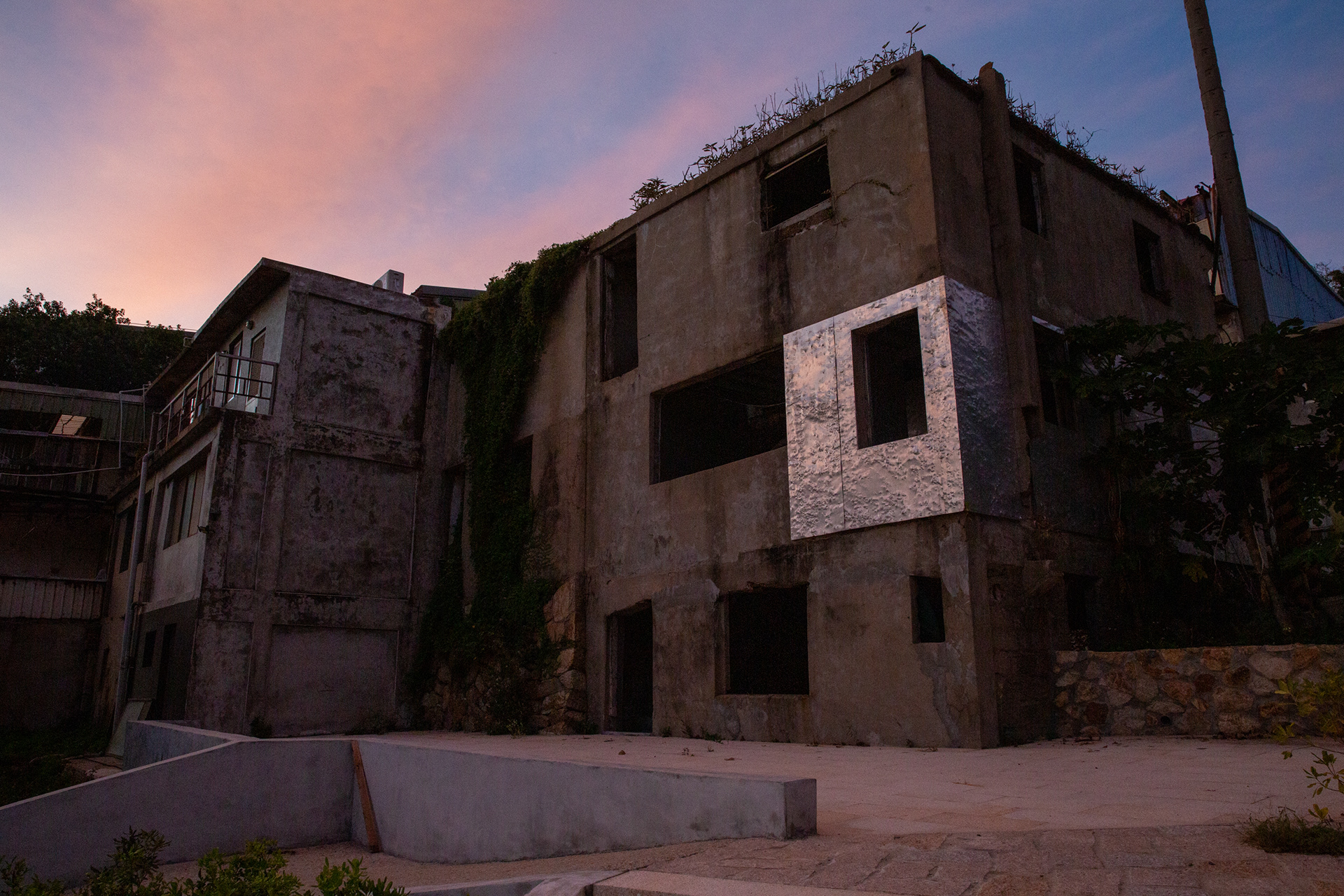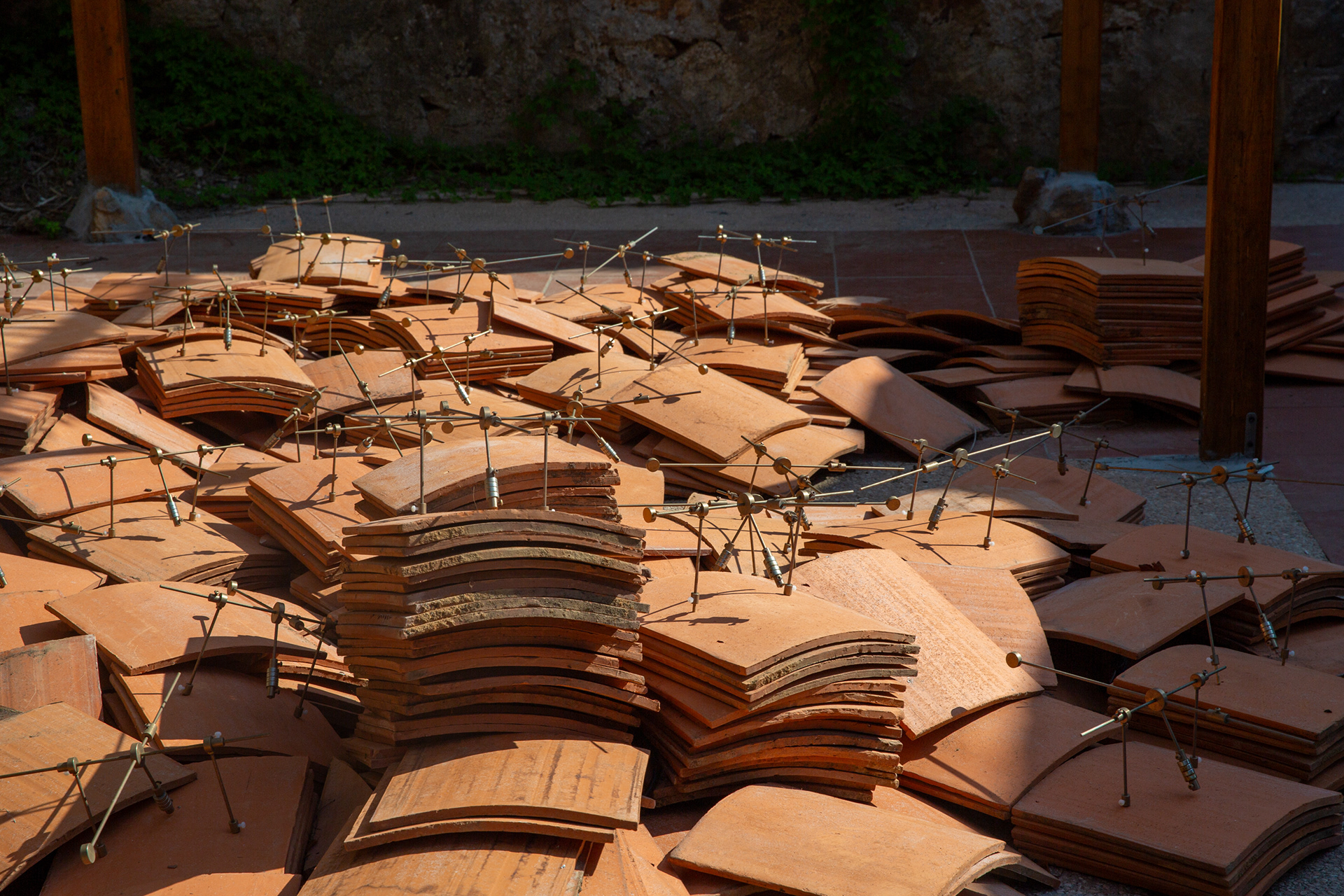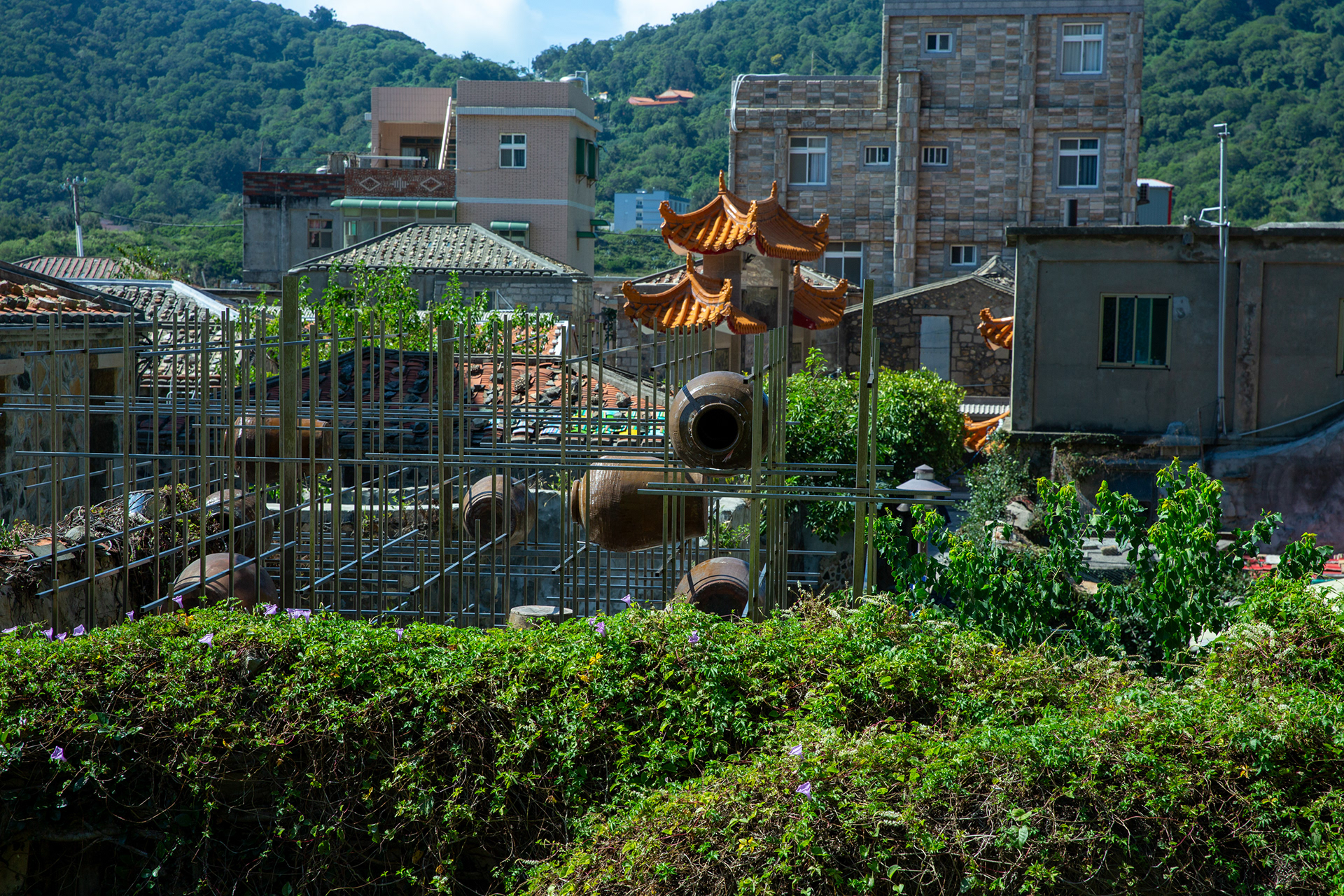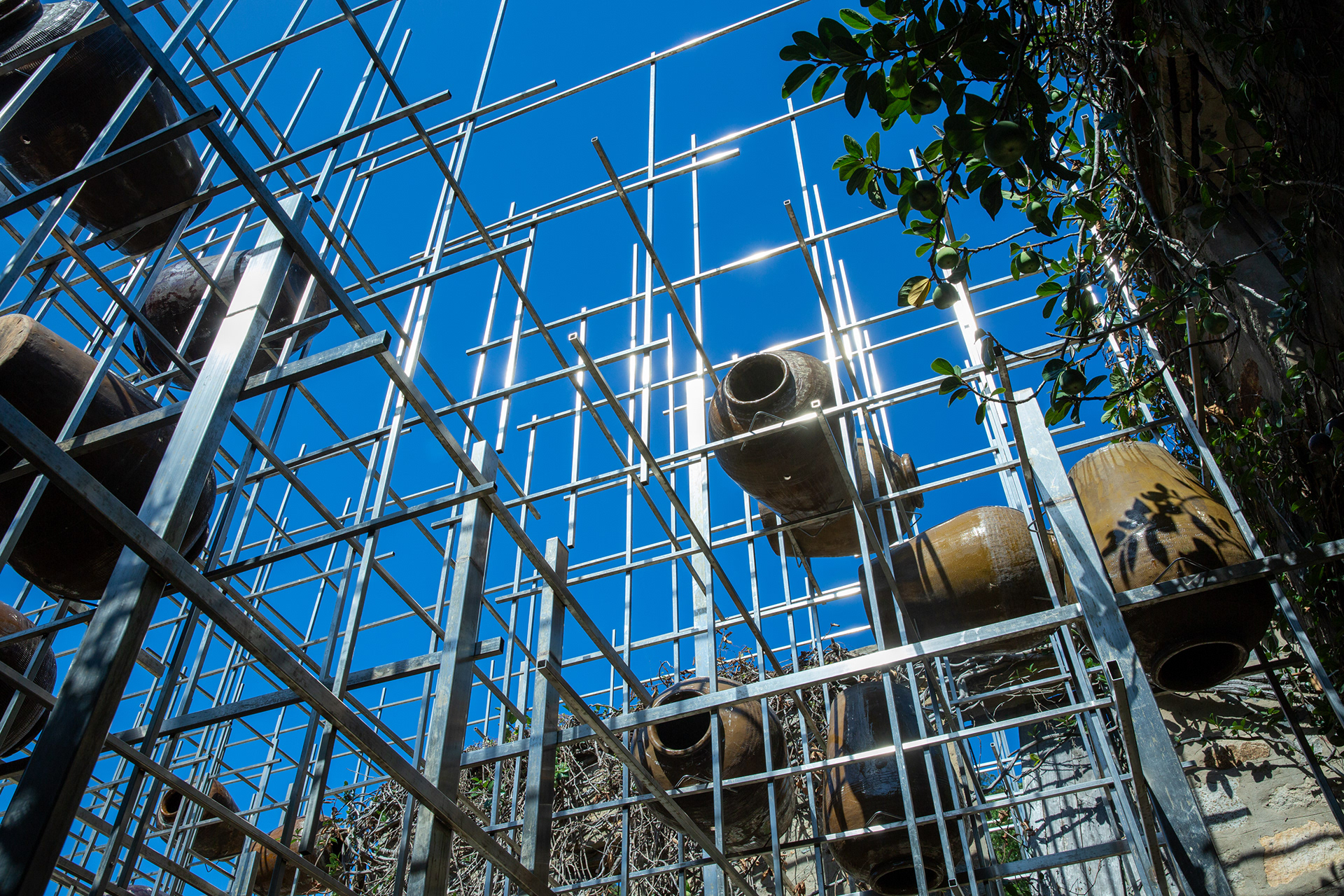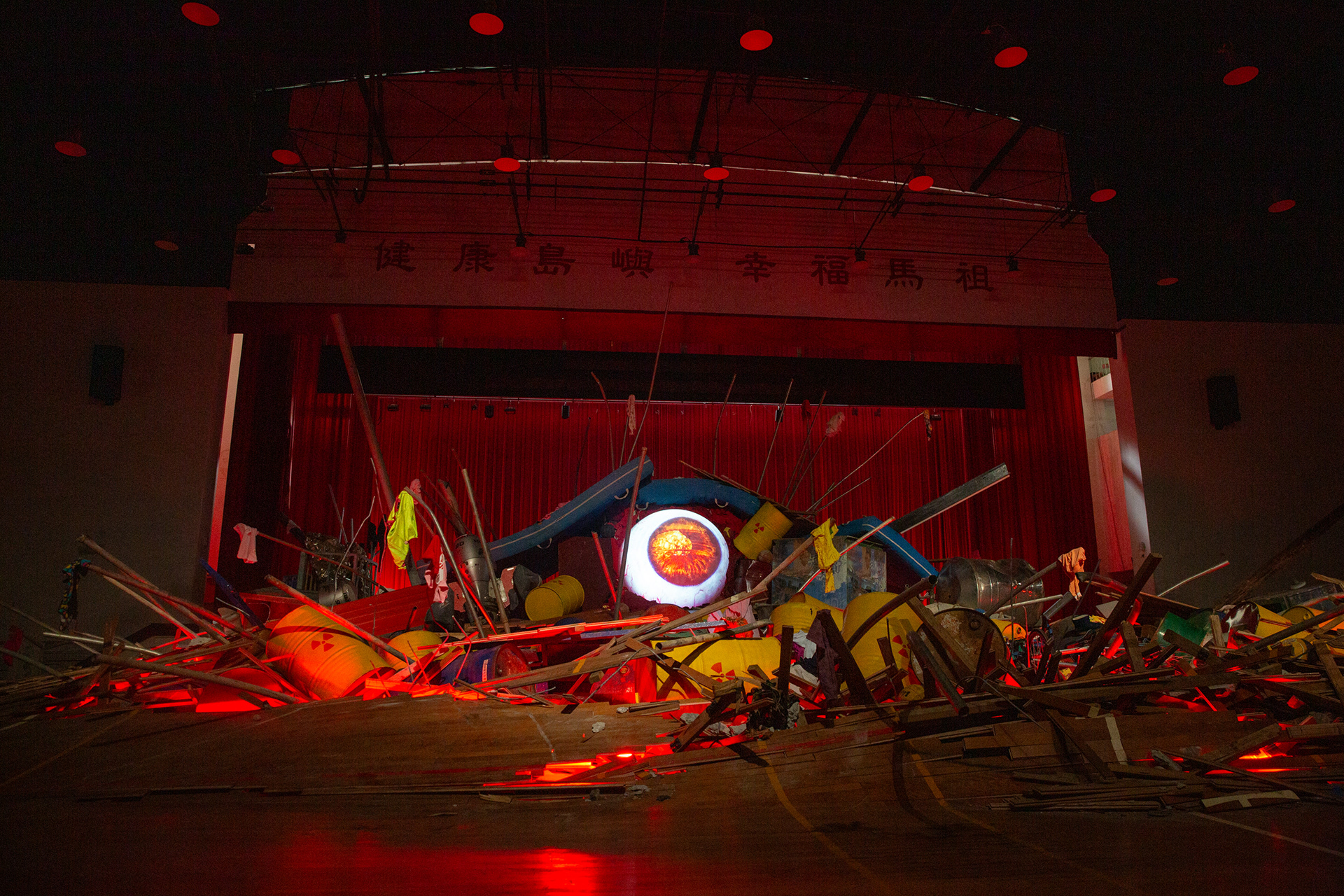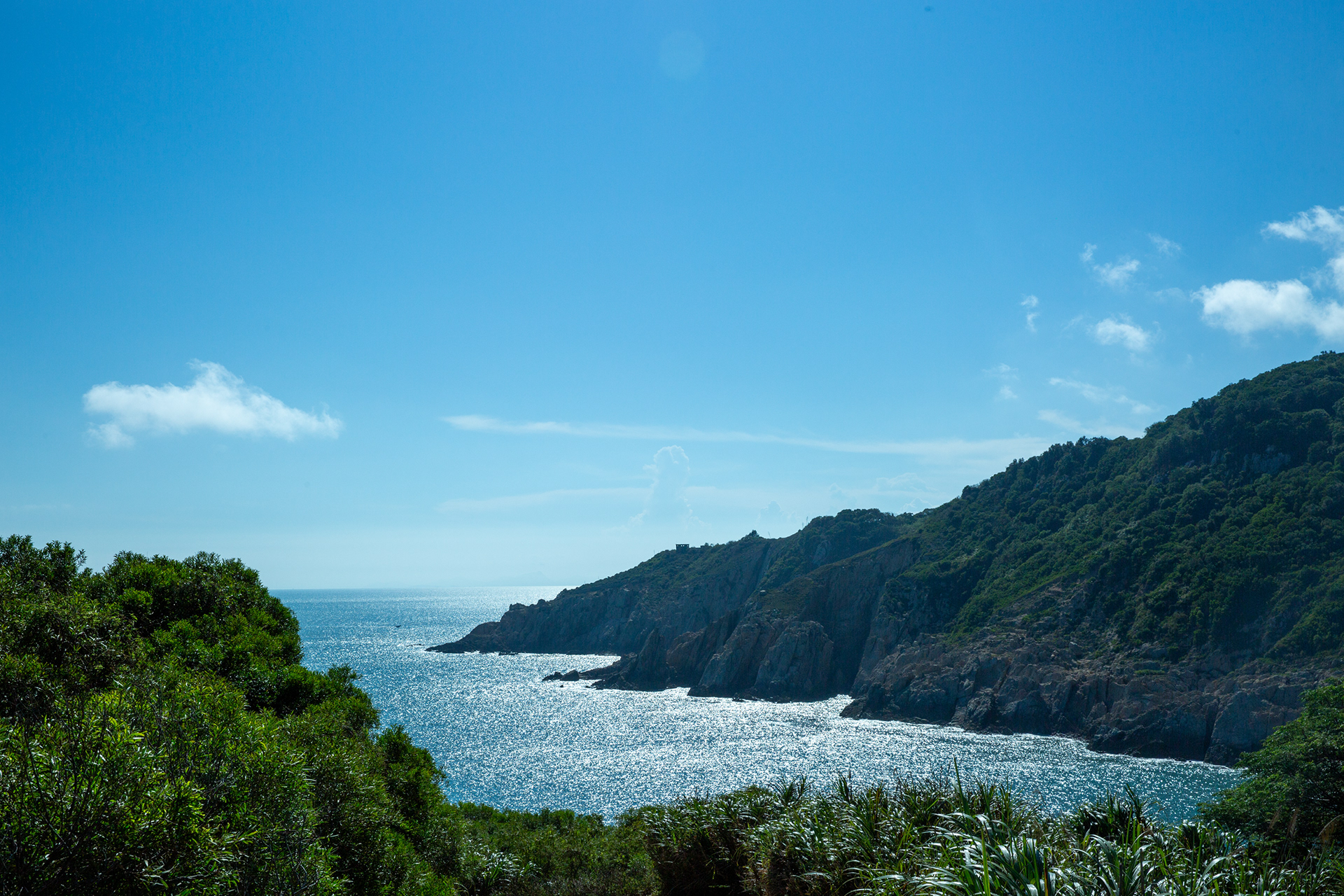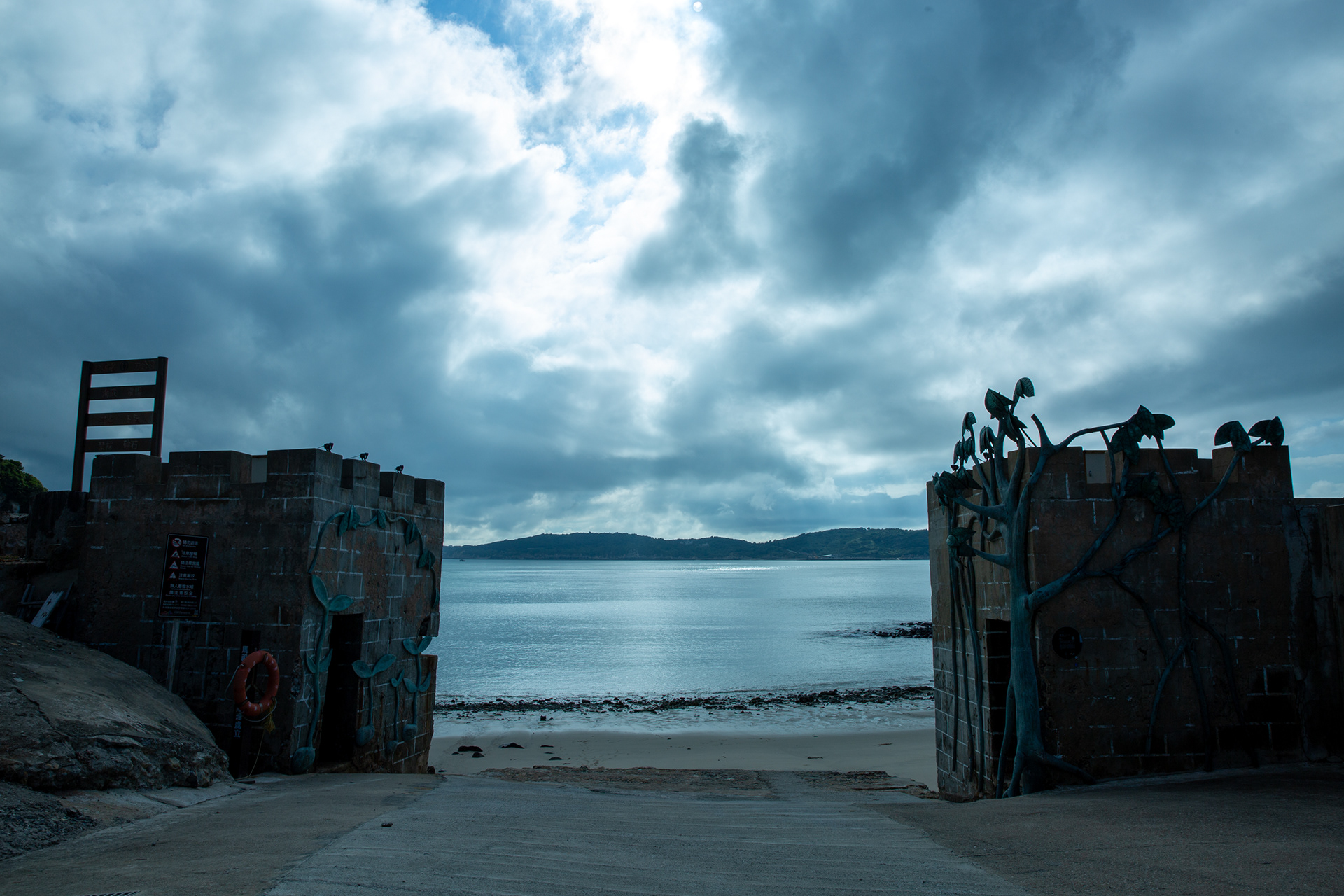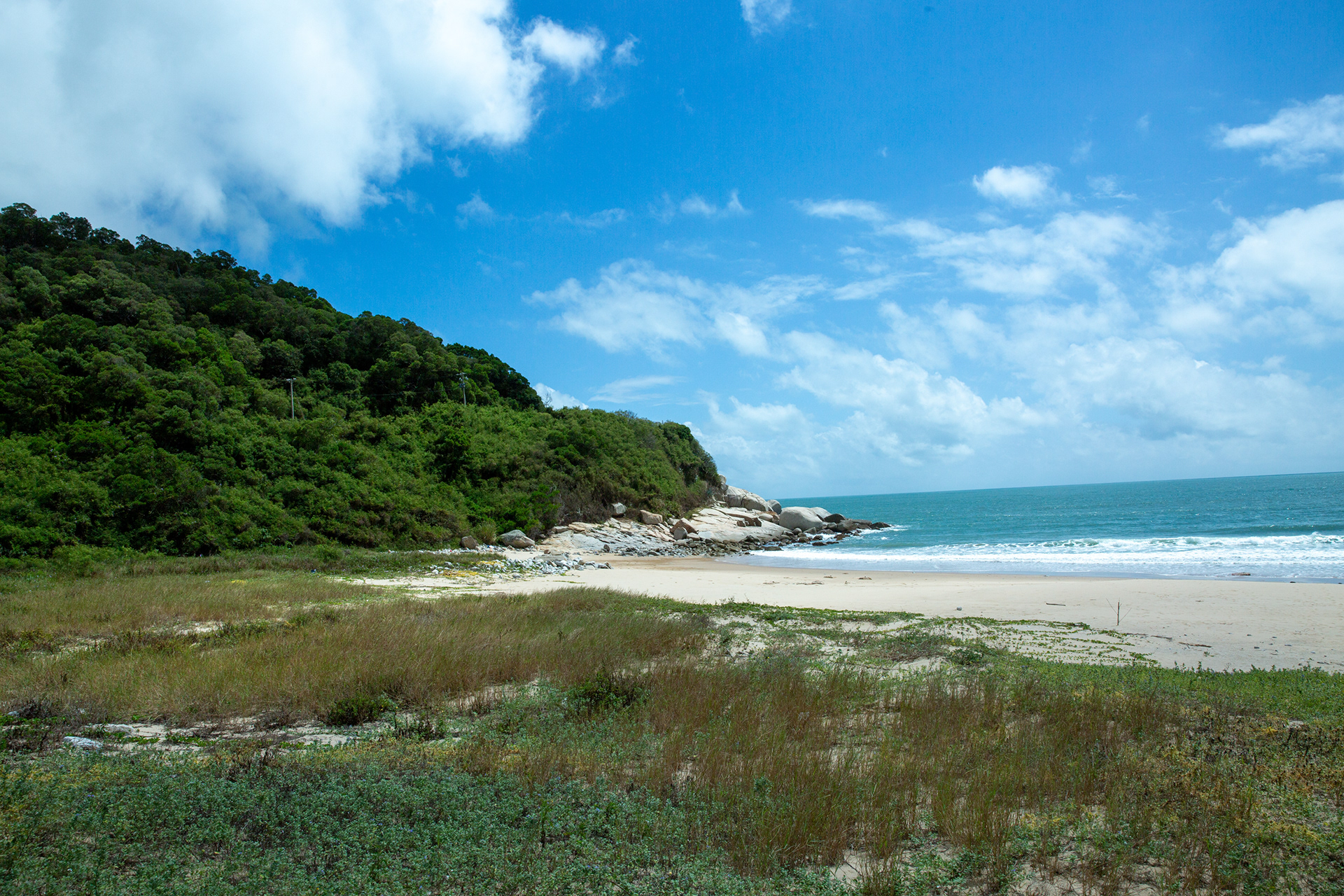From 25th to 30th September I visited the 2025 edition of the Matsu Biennial. The Biennial hosts an incredible range of artwork installed in a wide variety of locations across the islands; Nangan, Beigan, Xiju, Dongju and Dongyin. The title of the Biennial is Pha-jiu: Your Sea, My Land. Pha-jiu refers to a traditional, generational fishing method of the people of Matsu, and the curatorial intention seeks to harness this tradition as an overarching theme that "connects Matsu's cultural heritage and modern life to explore topics of ecology, identity, spatial politics and relational aesthetics". Within this, the relationship between the islands, their communities, materiality and the surrounding waters, the titular land and sea, all vividly permeates throughout the presented works.
In studying the Biennial website, I discovered an extremely well-presented map, listing each work and its location on the islands. This provided the initial inspiration for the purpose of my visit. Having previously made sound recordings on Matsu, and currently exploring various sound mapping projects in Taipei, my proposal was to use the cartography of the biennial as a framework by which to sonically map the islands. In developing this project, I also decided that in addition to field recordings tied to each individual location of the works and their surroundings, i would also create unique generative soundscapes in response.
By blending the sounds of both the islands and their artworks with these conceptual sonic responses my aim is to create a new body of experimental sound that will create a unique and comprehensive portrait of Matsu, and the biennial as a whole. In my first expedition I visited Nangan, Beigan, Xiju and Dongju and was able to visit each piece situated on these islands. The curatorial direction and wide variety of locations that host the works provided a fantastic structural approach that led to a thorough exploration of all corners of Matsu. The routes are clearly delineated and easy to follow, and in simply moving from one work to another it is possible gain an exhaustive experience as a visitor. In recording in and around each of the works I have amassed a significant body of material, and I will continue this process as I seek to return to visit Dongyin before the conclusion of the biennial in November.
Covering many disciplines and mediums, and ranging from the fragile and delicate to the striking and monumental, the breadth of artwork on display was spectacular. I found that much of the work brilliantly captured the fabric of Matsu perfectly, blending the organic, flora, sand, stone and water with metal, machinery, structure and infrastructure. Houses, shops, villages as well as temples, forts and strongholds became home to art. The rich and diverse history of the Islands was captured perfectly, and its deep narrative imparted beautifully to the viewer.
Some stand out works for me were Tide & Time by Liu Chih-Hung, Project God-zilla – Healthy Islands Happy Matsu by Yukinori Yanagi, The Sea Drips by Leung Mee-Ping, and the fantastic series of works at the Beigan Power Plant. Perhaps my favourite work however was the majestic kinetic sculpture "Fishing Dream" by Chee Wai-Loong. Constructed from a plethora of re-purposed fishing equipment and the materials utilised in that industry, its movement is powered by wind and sun, creating a harmonious orchestra of rustic sound that blends perfectly with the glittering reflections that cast a dappled dance of light on the pier it inhabits. It is emblematic of the ethereal nature of the islands, their fishing heritage and material culture. For me it represented a perfect summation of the biennial itself, and its symbiosis with the islands. This work is also the first I developed amongst four work-in-progress sound pieces that I have presented here.
Although my schedule was incredibly busy making these sound recordings, I did have time for the occasional more leisurely visits to various spots for relaxation. My first recommendation in this regard was where I made my base for the duration of the trip; Jinsha Village. This beautiful village is great to simply wander and explore, and is home to a fantastic and peaceful beach. Two restaurants that I experienced here are also well worth a look. Firstly 津沙村榕樹下快炒店 which is an excellent spot for fresh seafood and cold beer, and also 津寮 • 創生基地 which is a restaurant and bar attached to a lovely local guesthouse. The staff here were incredibly friendly and provided excellent home-cooked local food and cocktails. Perhaps the most unique and memorable dining experience we had was at 阿池 where it is possible to eat fresh oysters and mussels almost straight from the fishing nets. This is quite possibly the best seafood I have had, and is an unmissable experience when visiting Matsu. The boss was incredibly friendly, and an incredible host.
As part of the biennial event programming, I was also able to attend a collaborative performance by Dance Forum Taipei and Toru Shimazaki called "South,Shattered Moon". This was a spectacularly choreographed show that drew heavily from Taiwanese indigenous cultures, referencing indigenous rituals, and deploying both traditional and newly created indigenous music to tell the story of a prophetic vision of the end of the world.
In terms of scenic recommendations, the two spots I most enjoyed were also host to some beautiful artworks. The first being The Scenery Outside the Window by ArchiBlur Lab / Chen Eric, which was an installation formed by a beautiful reworking of the structural elements of an abandoned house that faces out towards the sea and nearby temple. At sunset, the light reflects perfectly from the beaten metal facade and it is a short walk to the small but beautiful beach. The second was Qinbi village, Beigan. Amongst the climbing rows of stone houses there are some small shops and cafes, and on display some excellent film works; Marshal Tie Jia (Turtle Island, Jingsi Village, Spirit-writing) and Theatre of Sacred Armour, both by Hsu Chia-Wei. The view from here is absolutely stunning; overlooking another incredible beach and the famous Turtle Island. Two more notable mentions for works installed amidst incredible scenery are The Dream Pavilion by Juan Zamora and The Sea is My Land by Iyo Kacaw, although i can only mention so many here, truly so many of the works and locations are amazing in this regard. I have included some other photos of Daping Village and Beigan Stronghold No. 40 which were also lovely spots.
As well as my sound piece for "Fishing Dream" I am presenting three other pieces. These others are based on "Sparkling Abundance" by Lin Sheng-Feng, "18th Outpost-Sprout" by Cheng Tammy and "Big Other" by Pierre&Marie. These are very much work in progress (the final project will be contained in an online interactive map) but for now I will be updating this playlist over the coming months as I refine the sound and my approach to the project.


